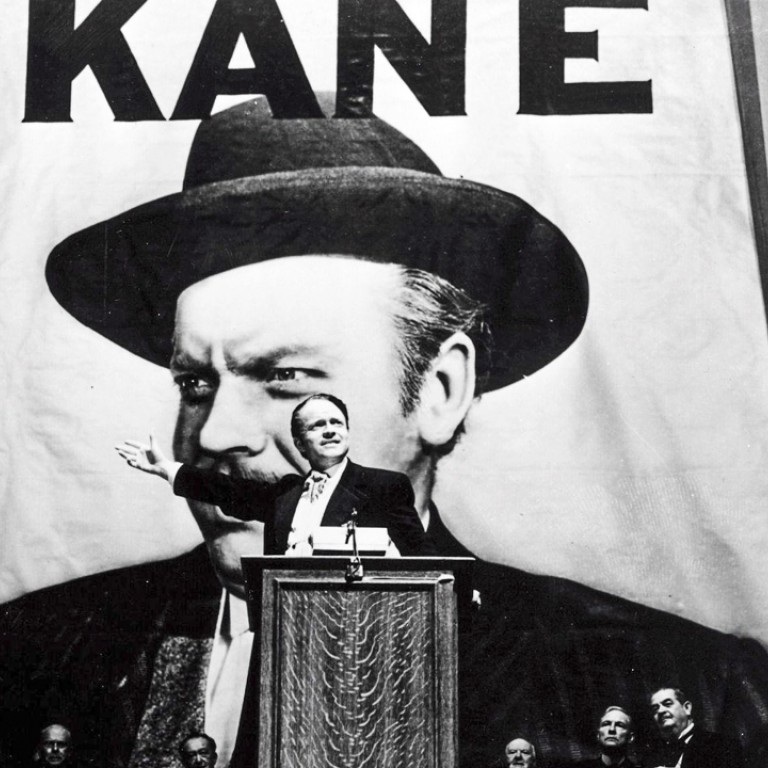
Book review: Life of Orson Welles on the way to greatness looks beyond the caricatures
Welles’ own mythologising is only one impediment to a full and accurate account of his life, but Patrick McGilligan’s diligent detective work cuts through the flimflam

by Patrick McGilligan
Harper

One of Orson Welles’ more famous fiascos – and there were a few – is titled It’s All True.
That title can never be applied to Welles himself. You’d be hard-pressed to find a figure in American arts around whom more stories swirl with varying degrees of truthfulness – in part fuelled by his love of tale-telling.
So in Young Orson, film historian Patrick McGilligan takes a different approach: trust (sort of), but verify. The result is a richly detailed, often nuanced study of Welles’ life and work from childhood through the first day of shooting of his masterpiece, Citizen Kane.
The broad strokes of Welles’ early life are familiar enough: born in Kenosha in 1915 and precocious from the get-go, he emerged as a wunderkind at the Todd School for Boys in Illinois, became a star on the Dublin stage at 16 and, by 22, had electrified the New York theatre world with an all-black cast production of Macbeth and a modern-dress staging of Julius Caesar.
In the next four years, Welles’ star would only shine brighter: landing on the cover of Time magazine just shy of his 23rd birthday; launching, with John Houseman, the Mercury Theatre; gaining national fame (and notoriety) with a radio production of The War of the Worlds; and being lured to Hollywood with an unheard-of production deal.
What McGilligan adds to the telling of Welles’ meteoric rise is an aggressive investigation of each step along the way; although Young Orson reads easily, it is powered by an evenhanded, almost scholarly rigour.
The overall portrait that emerges is more tempered and, frankly, more interesting than the caricatures that have taken over Welles’ popular biography
Like his family friend turned guardian Maurice Bernstein, Welles’ first great champion and mentor, Roger Hill, is depicted as an enthusiastic booster and enabler, urging young Welles on to greater things; when Welles was still a teenager, the pair collaborated on a successful theatre guide for schools called Everybody’s Shakespeare.
As McGilligan notes, Hill, Bernstein, Houseman and many of the people in Welles’ life set out to tell the story of the “boy genius”, each through their own prism. McGilligan diligently checks them against each other, and against the facts (if they exist).
In particular, McGilligan delves into Houseman’s many writings about Welles – all done after the pair’s very public falling out – and shows that many of the actor-producer’s stories, accepted as gospel over the years, just don’t hold up.
The overall portrait that emerges is more tempered and, frankly, more interesting than the caricatures that have taken over Welles’ popular biography.
Years before he was the Orson Welles, Welles had an incredible knack of meeting, and connecting with, many of the leading cultural figures of his time. McGilligan recounts how as a youth, Welles met Stravinsky and Houdini, and how playwright and novelist Thornton Wilder become one of his earliest champions.
The Welles that emerges in Young Orson is more complex and more straightforward than you’ve likely seen or read before. Which might be the portrait that Welles wanted to leave behind.
McGilligan quotes an interview that Welles did with Peter Bogdanovich, in which the latter tries to get the former to admit something in one of his movies signifies something from his past. McGilligan writes: “‘No, Peter,’ Welles, insisted, refusing to nibble. ‘I have no Rosebuds.’”
Tribune News Service
